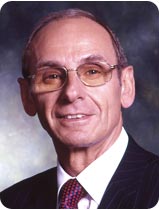NPfIT progress so far
- 27 March 2008
 |
Much has been written about the National Programme for IT but too all often the articles are misinformed, inaccurate or are sourced by those with their own, less than objective, agendas.
A number of myths are often reported, for example that the programme is over budget (it isn’t and never has been); that clinicians have not been involved in the specification (thousands have fully participated and continue to do so); that the programme is secretive (it isn’t except where commercial confidentiality applies).
I am keen to address the myths and to provide facts about the work that goes on behind the scenes, the progress that has been and continues to be made whilst acknowledging and explaining the problem areas. This is the first of a series of columns that sets out to explain the challenges in delivering what is regularly billed as the largest civilian IT programme in the world.
NPfIT: one programme, many components
People tend to talk about the National Programme as though it is a single entity. It isn’t. It is a lot of component programmes that, together, present a real opportunity to transform healthcare as we know it for generations to come. The aim of enabling important patient information to be available when and where patients need treating is the goal, and many members of the public are surprised that this isn’t the case today.
There is much to be done before that goal becomes a reality across the NHS and across the independent and voluntary sectors and social services who all play a valuable role in treating patients, improving patient safety and clinical quality and improving the overall health and well being of the nation.
Much has been achieved
A great deal has already been achieved and I thank those NHS organisations who have already adopted systems and services, and who are now realising the subsequent benefits. Around 50% of patient referrals are now regularly made via the Choose and Book service which enables patients to book their first out-patient appointment at a time and place convenient to them, and reduces the number of “did not attends” that used to reduce the availability of booking slots. Last week 86% of GPs made a booking using this method.
Almost 4,000 GP practices are regularly using the GP2GP system to securely transfer over 5,000 patient records a week between sites in minutes, where paper records take between six weeks and six months to transfer. This enables GPs to provide better, safer care for patients by having records to hand and also brings time savings for GPs.
The National Programme does not have a “rip and replace” approach. From the outset, the strategy has been to implement a series of software releases for relevant IT components with increasing richness of functionality whilst, at the same time, rolling systems out geographically.
National programme focus on integration
This puts a large dependency on integrating new national and local NPfIT systems with existing IT systems. Work behind the scenes established a National Integration Centre (NIC) where suppliers can test their applications and gain compliance with the Spine and Choose and Book. The design of the NIC is based on the Stock Exchange, which has a similar challenge of integrating multiple financial IT systems to process information across different systems and organisations whilst maintaining the integrity of the data.
To date, over 60 suppliers and over 100 software releases have gained compliance through the NIC enabling existing systems to participate in the National Programme and to deliver benefits through interoperability.
Driving development of common terminologies
Another example of work behind the scenes to lay the foundations for the programme is the establishment of SNOMED CT (Systemised Nomenclature of Medicine Clinical Terms) as a terminology standard. We led the work with seven other countries to establish a common terminology standard for leading healthcare systems. The use of common terminologies across healthcare settings has a large part to play in improving patient safety. The establishment of the International Health Terminology Standards Development Organisation (IHDTSO) as a joint venture with other countries and headquarters in Denmark will help to ensure the move towards a global standard of healthcare.
Standards for clinical safety
A third example of work behind the scenes is in respect of clinical safety standards. When the National Programme was initiated, there were no national or international standards of clinical safety for the manufacture and use of clinical IT systems. Drawing on best practice in other industries, NHS CfH designed and implemented a Clinical Safety Management System for Health IT products, based on the principles of IEC61508, a generic standard for safety critical software.
Meanwhile, the European standards body, CEN, has commissioned the development of standards relating to the manufacture of health IT products and to users of these products. The global standards body, ISO, has a mirror panel with CEN such that standards approved by CEN will also be accepted as ISO standards. NHS CfH has led the development of the CEN/ISO standard for manufacturers and this is closely aligned to our clinical safety management system. We have also fed into the development of the user standard as this will apply in our context to NHS Trusts.
Standards to be issued by end 2008
Both standards are now well advanced and it is likely that these will be issued by CEN/ISO by the end of 2008. While these standards have progressed through the CEN processes, the same standard has also being going through the NHS Information Standards Board (ISB) and is due to be issued as an ISB Standard in the next few months.
Just to round off the update on standards, which are essential in achieving interoperability and integration between and across IT systems, NHS CfH has established a programme to achieve the adoption of the NHS number as the unique patient identifier across the NHS. The ISB approved the NHS Number as a draft fundamental standard in January 2007 and plans are in hand to introduce compliance using an incremental approach.
N3 delivered ahead of schedule
In terms of progress, the NHS National Network (N3) was implemented ahead of schedule, providing a secure private broadband infrastructure for the NHS with a back-up system that currently connects over 22,500 NHS locations. This technology has improved resilience and had saved the NHS £192m by April 2007, and is set to save a further £95m per year. The current focus is on maximising the potential of N3 for the NHS, introducing voice over internet protocol to reduce telephony costs for the NHS and enable better communications for clinicians.
PACS implemented in all acute trusts
Digital imaging to replace X-ray films is now implemented across all acute trusts ahead of time and has dramatically reduced the diagnostic waiting times for patients. With the old X-ray films, around 20% went missing and digital imaging is much more reliable. The next challenge is to make the images available across care settings.
Delivery of secure encrypted email system
NHSmail is a secure, encrypted e-mail service that enables clinicians to communicate and, where appropriate, to send patient details safely to colleagues involved in their treatment. Some 337,000 NHS staff are now registered for NHSmail with over 150,000 using the system daily. The next NHSmail challenge is to upgrade the platform to Microsoft Outlook in 2008.
EPS making ‘steady progress’
The Electronic Prescription Service continues to make steady progress with 64% of GP practices and 64% of pharmacies now live and 22% of prescriptions being issued electronically.
We will cover the Summary Care Record, currently being rolled out in early adopter PCTs, and the plans for new IT systems to support local care records in future columns. However, success in the future will be a widely available NHS Care Record Service with SCR available in A&E, out-of-hours or other care settings where patients who have agreed to have a SCR need clinicians to know key facts about their health.
Much more to be done on electronic patient records
Whilst much has been achieved both behind the scenes and in terms of delivery, there is still much to be done before we have electronic patient records joined up to support patients across care settings and across care providers. NHS Connecting for health will continue to work closely with the wider NHS and suppliers to ensure the remainder of the programme is delivered and the overall goal achieved.
E-Health Insider readers are invited to share their comments on this Comment and Analysis column by NHS CfH’s Gordon Hextall. All reader comments are pre-moderated ahead of publication.




